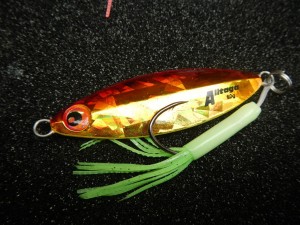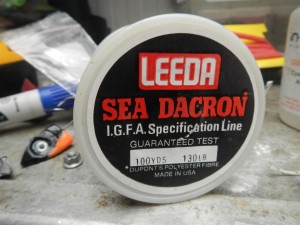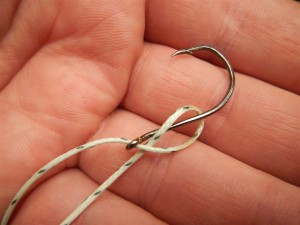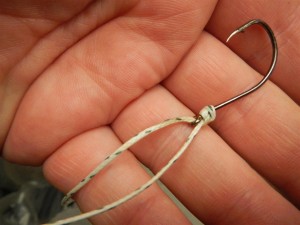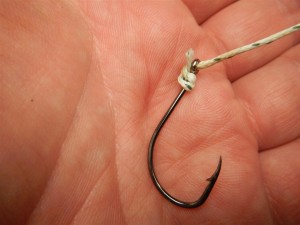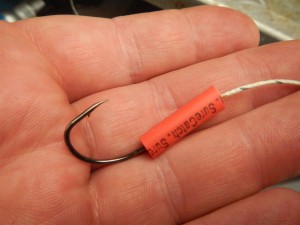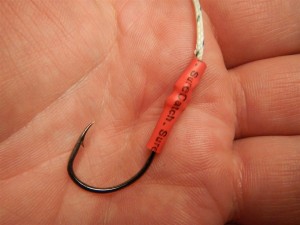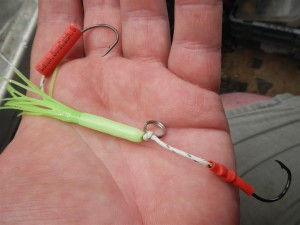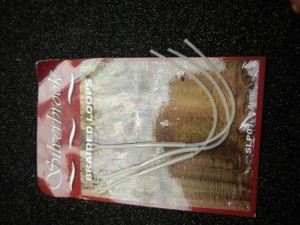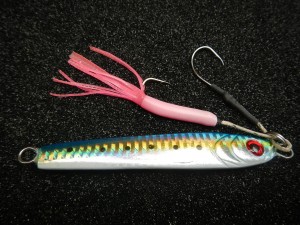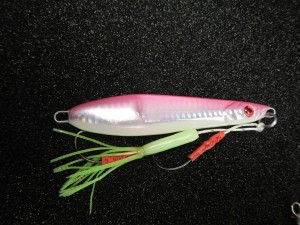Ever tried using a metal jig and lost it on the first drop? Jim CLohessy reckons you need assist- ance!
Jig Rigging
Jim Clohessy shows some popular rigging methods for jigs and pirks.
Metal jigs seem to be making a bit of a comeback recently. I wonder why this is? Something in me says that our world was not ready for metals the first time round. It is a good few years ago now that we first were exposed to the like of Butterfly and Speed Jigs. I was excited by them first time around and gave them a good seeing to on the water but I must say I soon returned back to shads and worms when I could not notice a huge difference in catch rates. I had done the research I had the techniques down the one thing I didn’t have was the rod! It was tough enough to get a decent light boat rod not to mind looking for a Japanese jigging rod. At the time I couldn’t see the merits of short rods I much preferred the action and style of longer rods. This all took the fun out of jigging so it was no shock to think that I had changed back to “normal” methods. I was not without my success. I remember catching some superb cod on a 300g Surecatch blade jig. I remember on particular pollack session in Kerry where a 250g jig was making the difference in winkling out the bigger cod.
The continentals have been jigging or pilking for donkeys. Again the rods they used left a lot to be desired. It is only lately when you see guys using light lure rods and light beautifully formed jigs that you realise that you could be missing out on something. I remember an early season pollack run a couple of seasons back. The lure that was most successful on the day was a simple Surecatch Sea Krill lure in 60g. The only thing I didn’t like about the lure was the treble hook mounted on the bottom. Simply put this was going to be a snag magnet if left too near the bottom for too long. I much prefer fitting assist hooks on the top eye rather than the bottom.
I have been making my own assist hooks for a good few years and the process is a simple one. I always get a giggle when I make up a few because I use a spool of Dacron that is over forty years old! After that I use my hook and a little bit of heat-shrink tubing. Any bling or suchlike is really down to the angler themselves.
Firstly there the choice of hook. I like to use tough short-shank wide-gape hooks. Patterns like Chinu’s are good. I have used a Surecatch Tec-Sharp Beakto good effect for a good few years. One of the things I find is that assist hooks and jigs might be in the wallet for a long period of time so hook that do not rust too quickly are great.
Getting down to the actual construction…I simply thread the Dacron through the eye of the hook (From the gape side of the hook) and then tie a single half hitch (Granny knot) followed by a another single. So simple you’d think it couldn’t be effective. I trim the tag end. You can if you wish use a drop of super-glue on the knot at this point; it will help the knot remain small but it is not actually necessary.
If I am making an assist with a big hook I will double the Dacron and have a loop. This makes it very easy to attach the hook to the jig. With smaller hooks (3/0 and down) I use a single strand of Dacron and tie it to a ring (Split or non split).
I select a diameter of heat shrink tubing that will slide over the knot easily. I will then hold the tubing over my heat gun until it shrinks snugly over the shank of the hook and the knot. Is the heat shrink necessary? Not really but if you have access to some you may as well use it as it looks good and is very tidy. Heat Shrink tube does not require a heat gun. A lighter will be effective but just be careful not to hold the lighter at one point for too long.
Bling / Teasers
It is perfectly acceptable just to use your Dacron tied hook and attach it to the jig and fish away. There is a trend of adding some bling to the hook to offer some added attraction to the lure. This can be in the form of spinner blades, beads, Muppets, feathers, tubing – The list is endless.
If I am tying a pair of assist hooks for a jig I tend to have one plain and one with bling. Does the blinged up assist make a difference? I think it can do no harm. Once it does not foul the lure then it is doing no harm. In fact teasers can work well with plugs so with a jig it can be similar. The thoughts are that the blinged up assist hook looks like a small prey fish being chased by the bigger lure anf thus triggering a predator’s reaction.
Braided Loop
Is Dacron necessary? I have never tried tying an assist with mono other than tangling I cannot see a reason why mono would not work. Certainly Dacron will put up with he attention of toothy critters better than mono. I can see heavy braid working well. To put it simply – experimentation with tying material is good. Dacron has worked well for me over the years so I stick with it (it also happens that I have a large spool of Dacron that will not be used for anything else). If you have neither heavy braid nor Dacron (Fly fishermen use Dacron for backing fly line) you could use some braided loops for fly line. I had a few here that were surplus to requirements and they worked out very well tied to assist hooks and the loop passed through a split ring. You can also loop the assist through a solid ring before attaching the hook. Solid rings are better than split rings but again I happen to have plent split rings in stock so I use them.
The removal of treble hooks from jigs and pirks will definitely increase the lifespan of your jigs. The tying of assist hooks to the top eye of the lure allows you to works the bottom with a jig better and more effectively than when using a jig with a treble. Of course it will not eliminate losses but it will reduce the number of simple snag and loose losses. Some jigs are becoming more detailed and scientific in terms of the action of the jig. As a consequence to this the prices paid for jigs is also increasing. Anything that reduces the loss of a jig is a welcome addition to your angling armoury.
As usual, if you have any questions, comments or queries – Editor@ topfisher.eu or contact Jim Clohessy via Facebook.
Video:
A Surecatch Pilchard 60g does the business – It’s a €3 lure!


